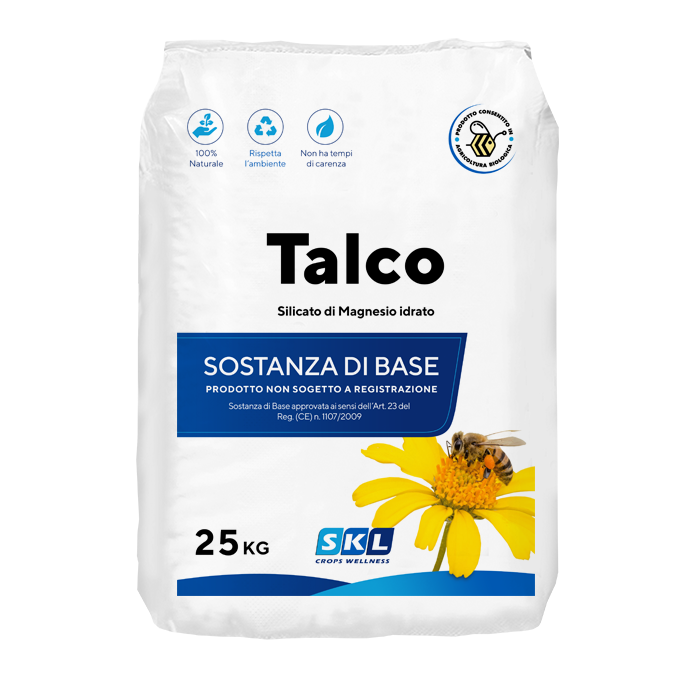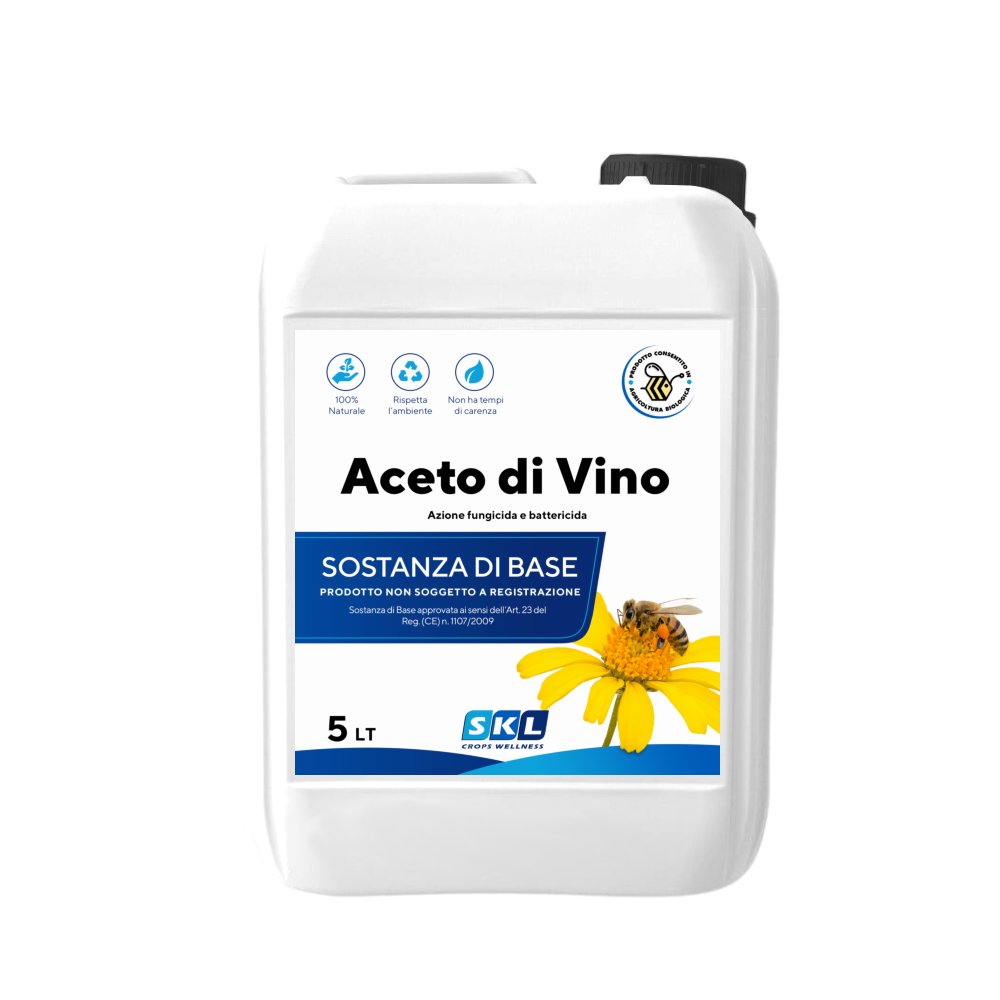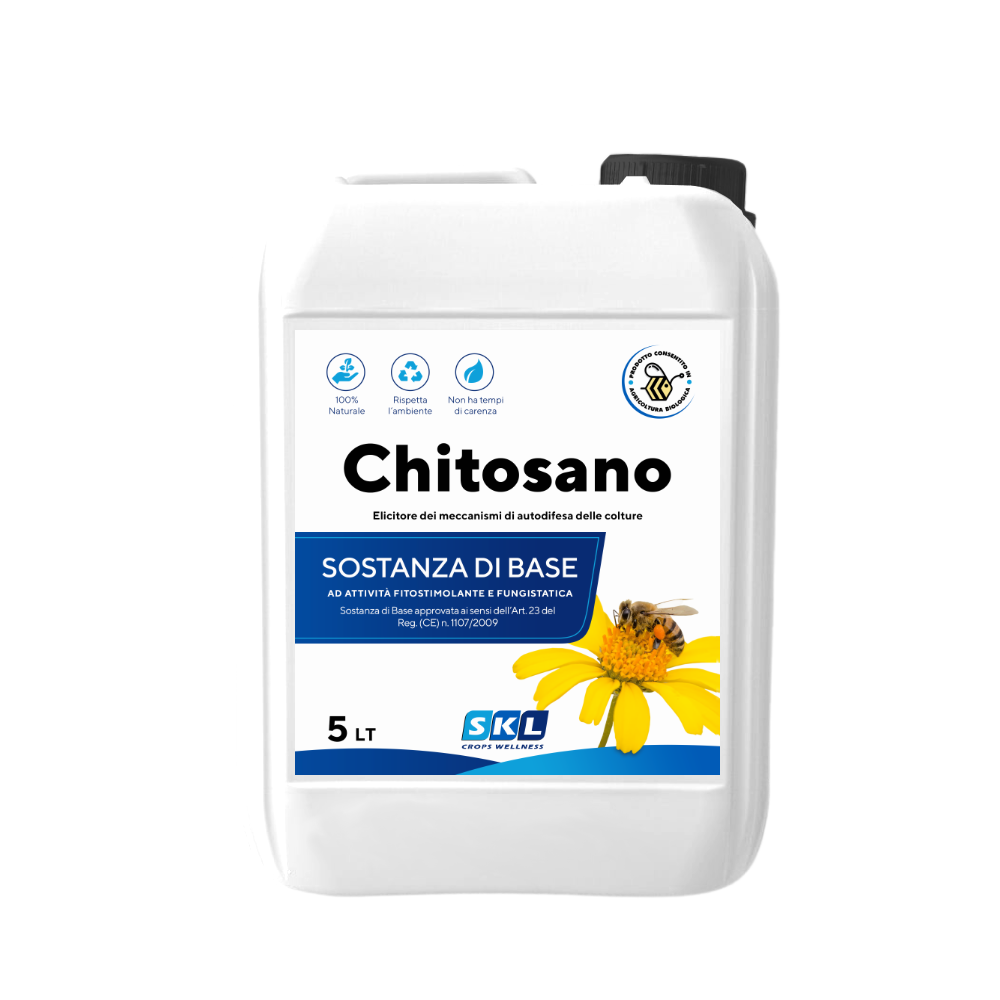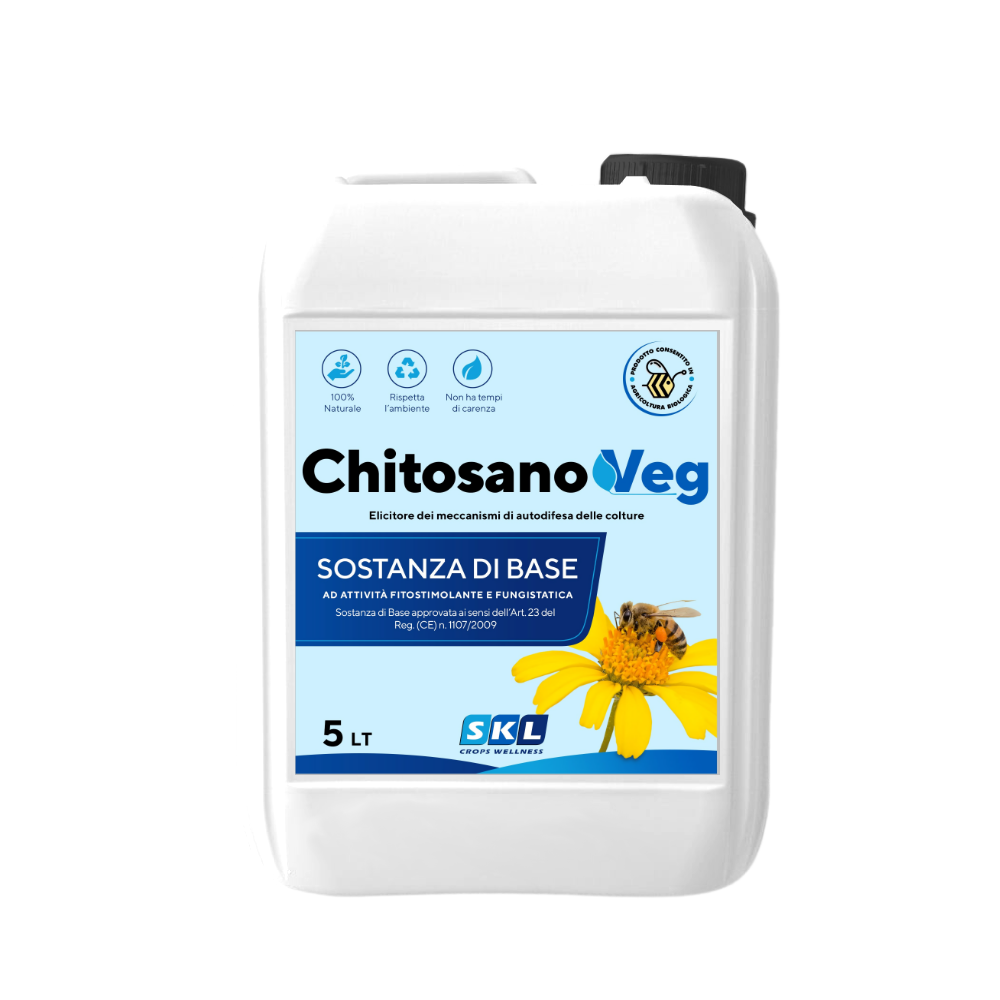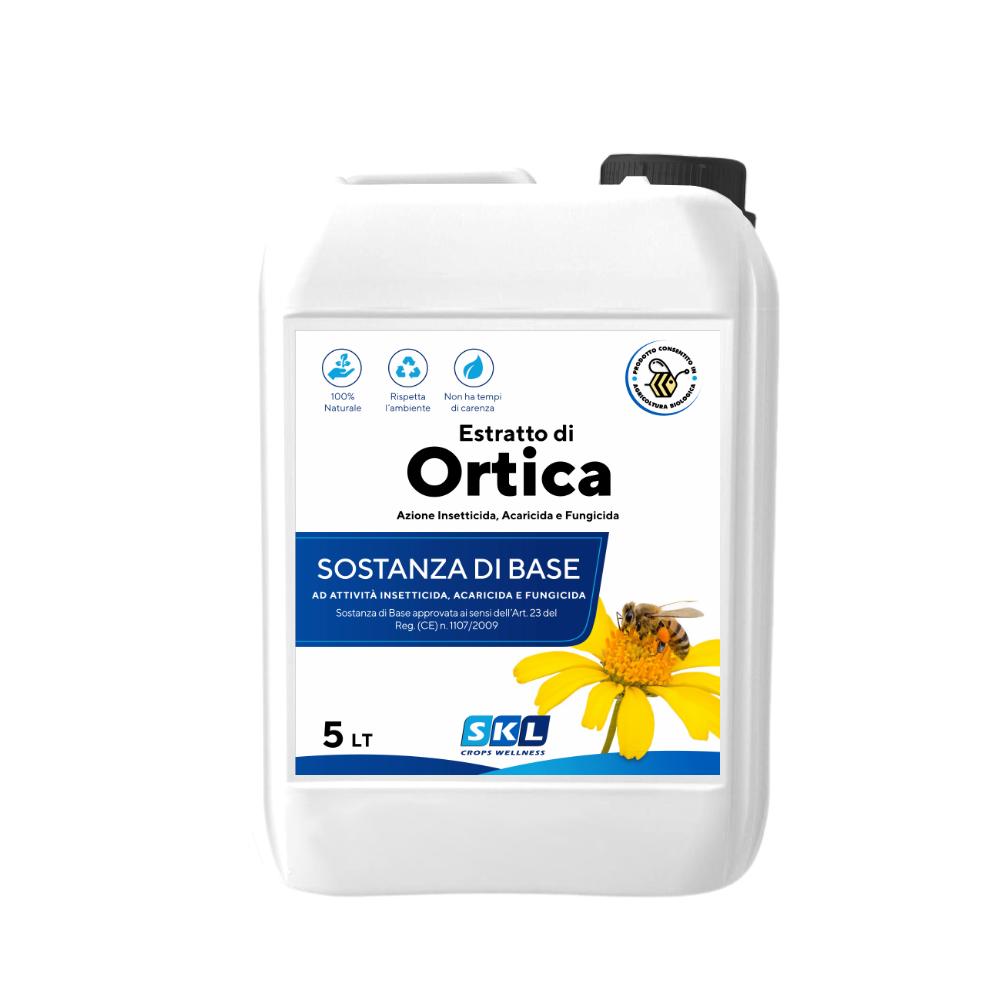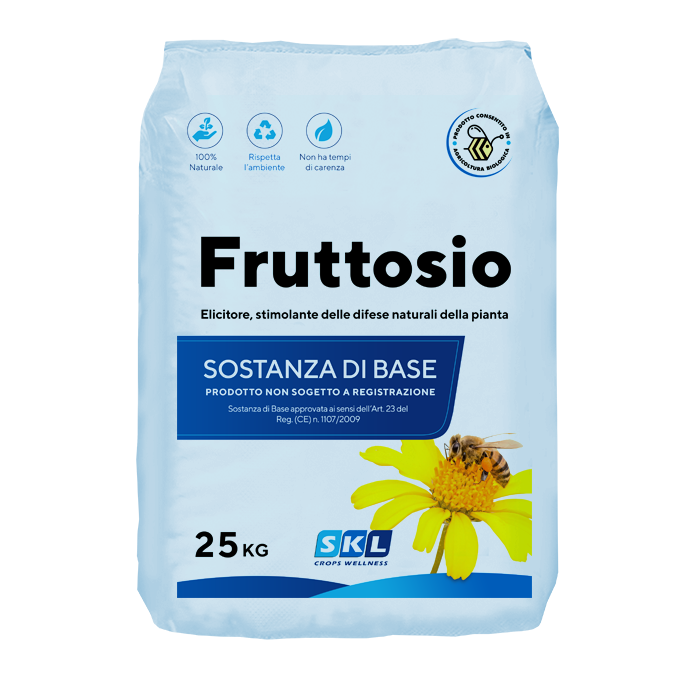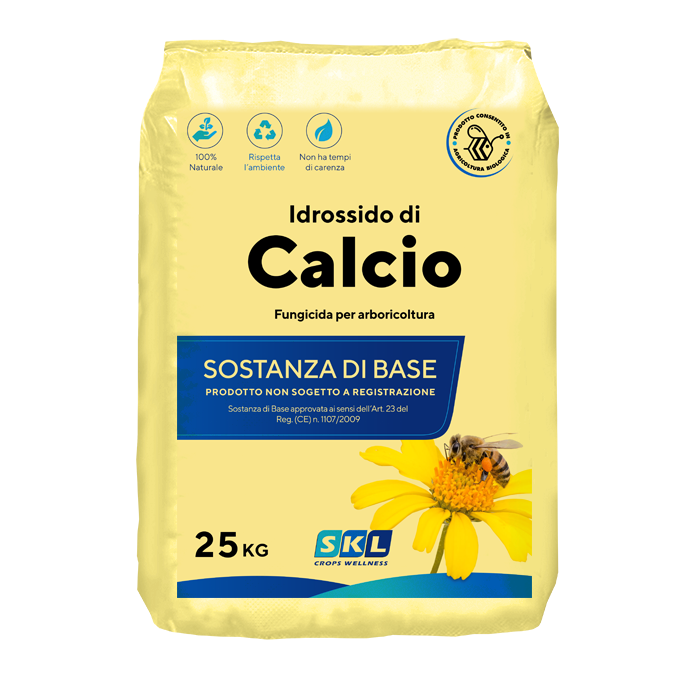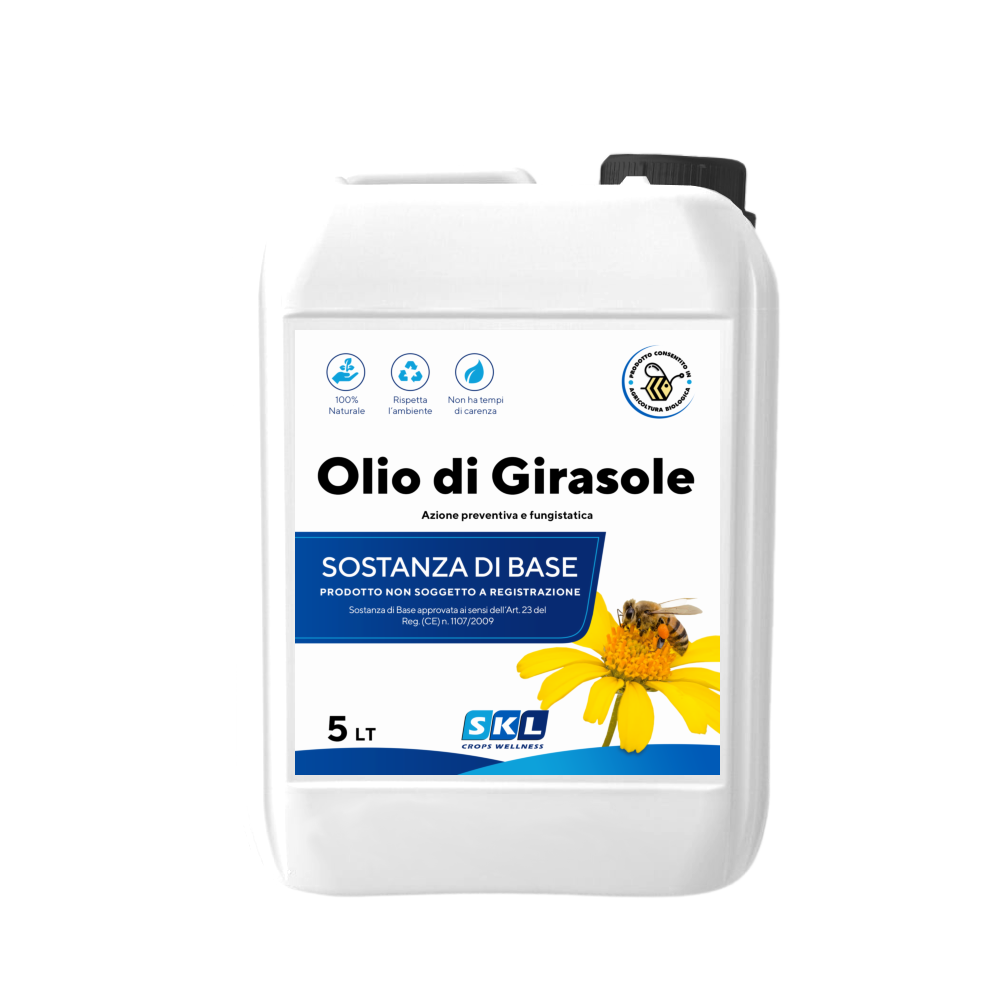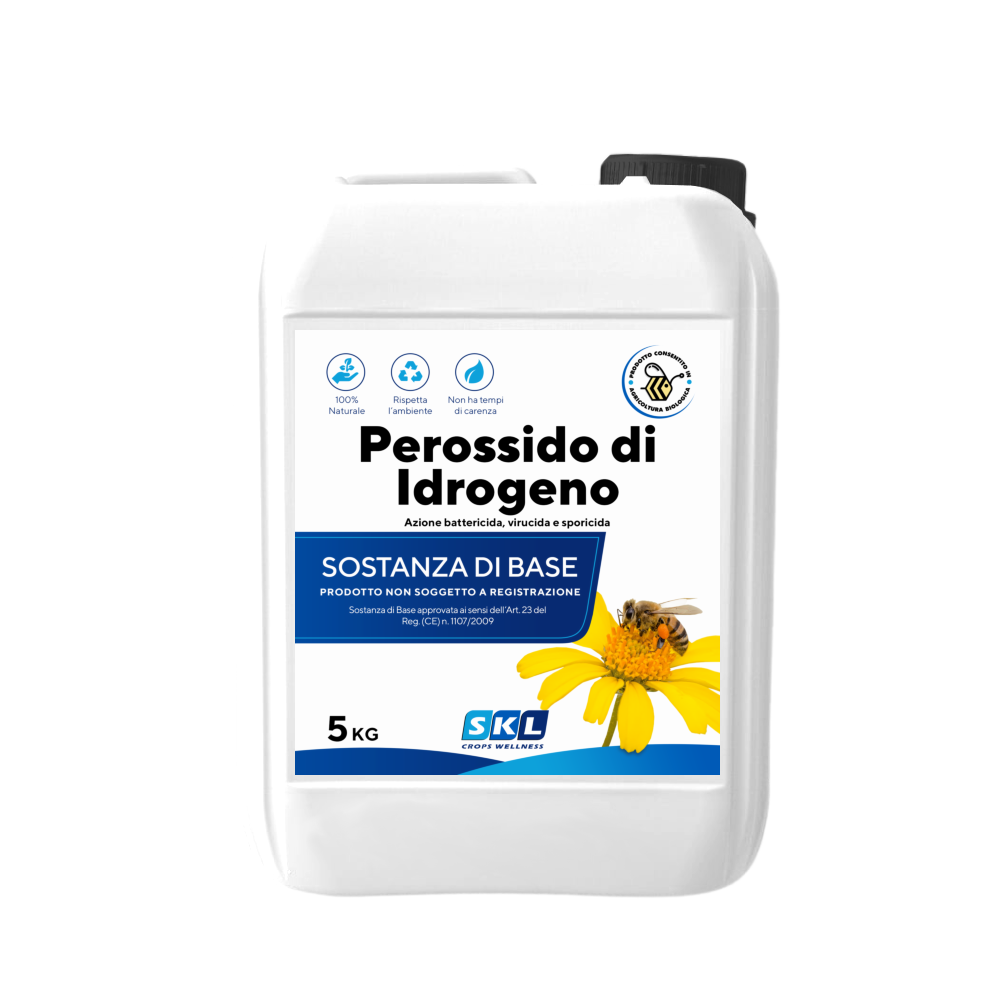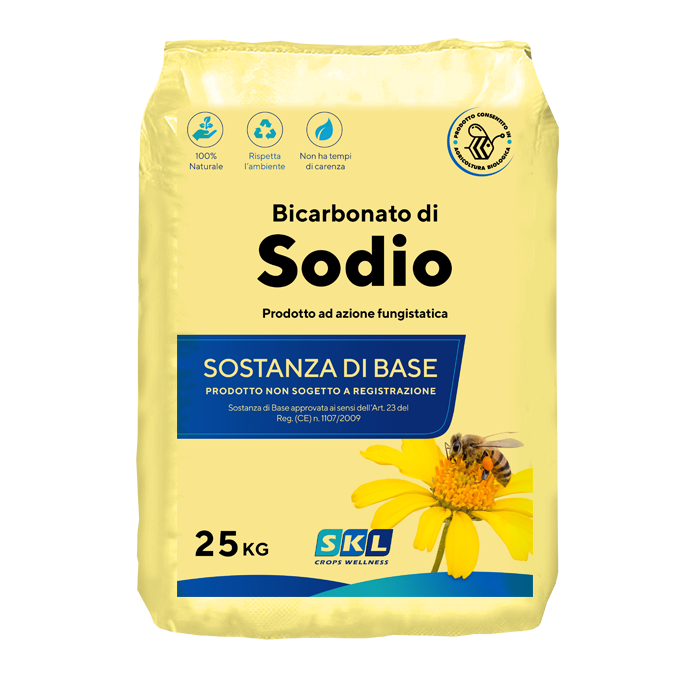Description
The Talc is a clay mineral composed of hydrated magnesium silicate with the chemical formula Mg3Si4O10(OH)2.
Talc is used as a thickening and lubricating agent, it is used in the creation of ceramics, paints, and coatings, and it is also one of the main components of cosmetic products.
It is a food additive regulated as Talc E553B as defined in Article 2 of Regulation (EC) No 178/2002.
Talc has a number of basic properties: laminar structure, chemical inertness, softness, hydrophobicity, and affinity for organic matter.
Talc is an inherently hydrophobic mineral. Talc particles are platelets due to the layered structure of the mineral. The basal surfaces are hydrophobic, while the marginal surfaces are hydrophilic. Sprayed on plants, it creates a physical barrier against insects and fungi and also provides effective protection against sunburn.
The specifications for food use must comply with those established for Talc E553B in Commission Regulation (EU) No 231/201210:
- Drying loss: not more than 0.5% (105°C, 1 hour)
- Substance soluble in acid: not more than 6%
- Substance soluble in water: not more than 0.2%
- Soluble iron in acid: Not detectable
Relevant impurities:
Arsenic: not more than 10 mg/kg
Lead: not more than 2 mg/kg
Asbestos-free.
< 0.1% of breathable crystalline Silica
Dosage
|
As an insect repellent - Physical barrier Insecticide (insect repellent)
|
||
| Crop | Adversity | Dosage |
|
Apple, Pear
|
Insects and mites:
Cacopsylla pyri, Cacopsylla fulguralis, Drosophila suzukii, Panonychus ulmi
|
38 - 90 kg/ha
from 2 to 5 treatments from BBCH 41 |
| Olive | Fly (Bactrocera oleae) |
38 - 90 kg/ha
from 2 to 5 treatments from BBCH 41 |
|
As a fungicide - Physical barrier antifungal
|
||
|
Crop
|
Adversity
|
Dosage
|
|
Apple, Pear
|
Leaf fungi:
Apple scab (Venturia inaequalis)
|
38 - 64 kg
from 3 to 5 treatments
from BBCH 41
|
| Grapevine |
Leaf fungi:
Powdery mildew (Erysiphe necator)
|
25 - 64 kg
from 2 to 5 treatments
from BBCH 20
|

